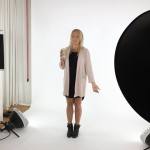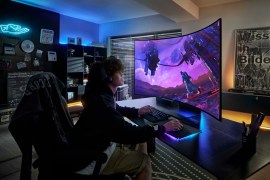Every Samsung QLED 2017 4K TV detailed
Who needs OLED anyway?
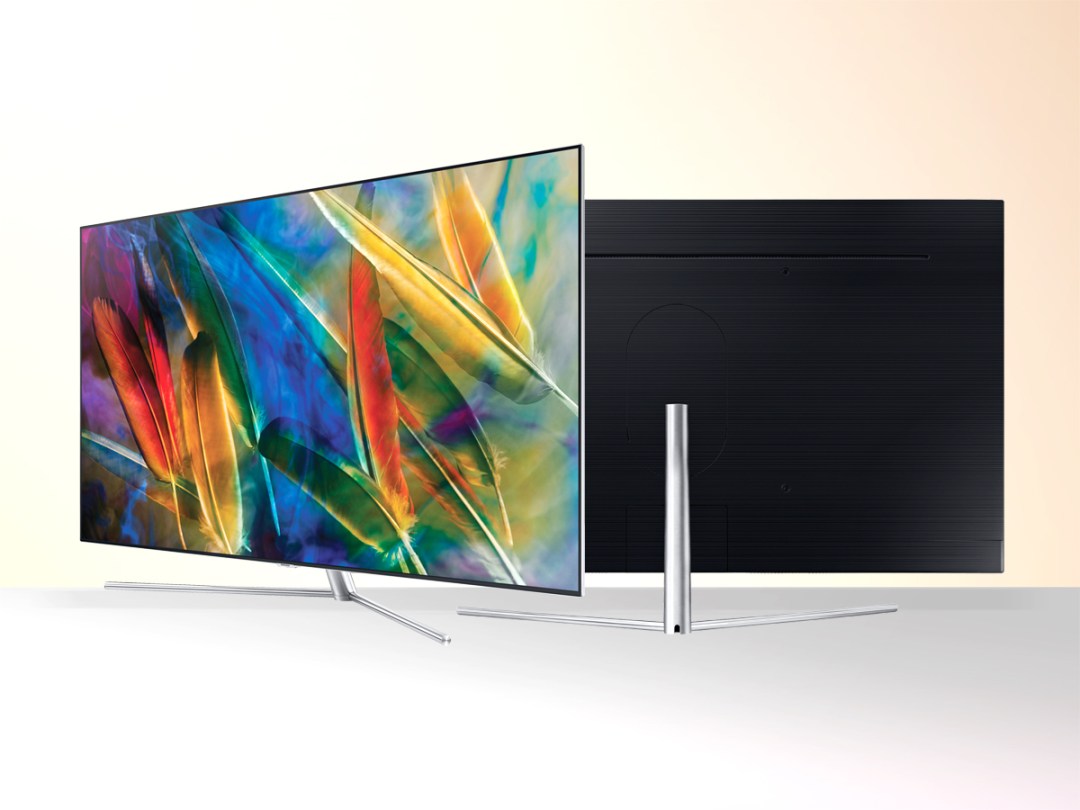
Samsung is sticking to the script it started three years ago – OLED is not the TV tech you should be investing in.
Despite its three big rivals offering at least one OLED this year, Samsung has kept a keen focus on LCD TVs, claiming its tech can match – or even better – that offered by the competition.
This year, that tech is QLED, which builds on the 4K quantum dot technology we’ve seen in Samsung tellies for the past three years. Among its boasts are superior brightness, improved colour and contrast, and better viewing angles. All big ticks for us.
Brightness in particular is a great response to OLED’s impressive black levels, offering up to four times higher peak brightness than OLED on its priciest sets. It promises 100% colour volume too, which claims to offer the most accurate colours out there.
As for design, Samsung has hit a home run there too, with near bezel-less displays, a full metal 360˚ design for a stylish, no-clutter back panel, and the company’s No Gap wall mount for fitting your new TV snug to your wall. There’s even the new transparent ‘Invisible Connection’ cable that’s a whole lot prettier than your usual mess of TV wires.
If that’s got your TV tastebuds going, keep reading for the down low on Samsung’s four-strong QLED line up.
Samsung Q9F
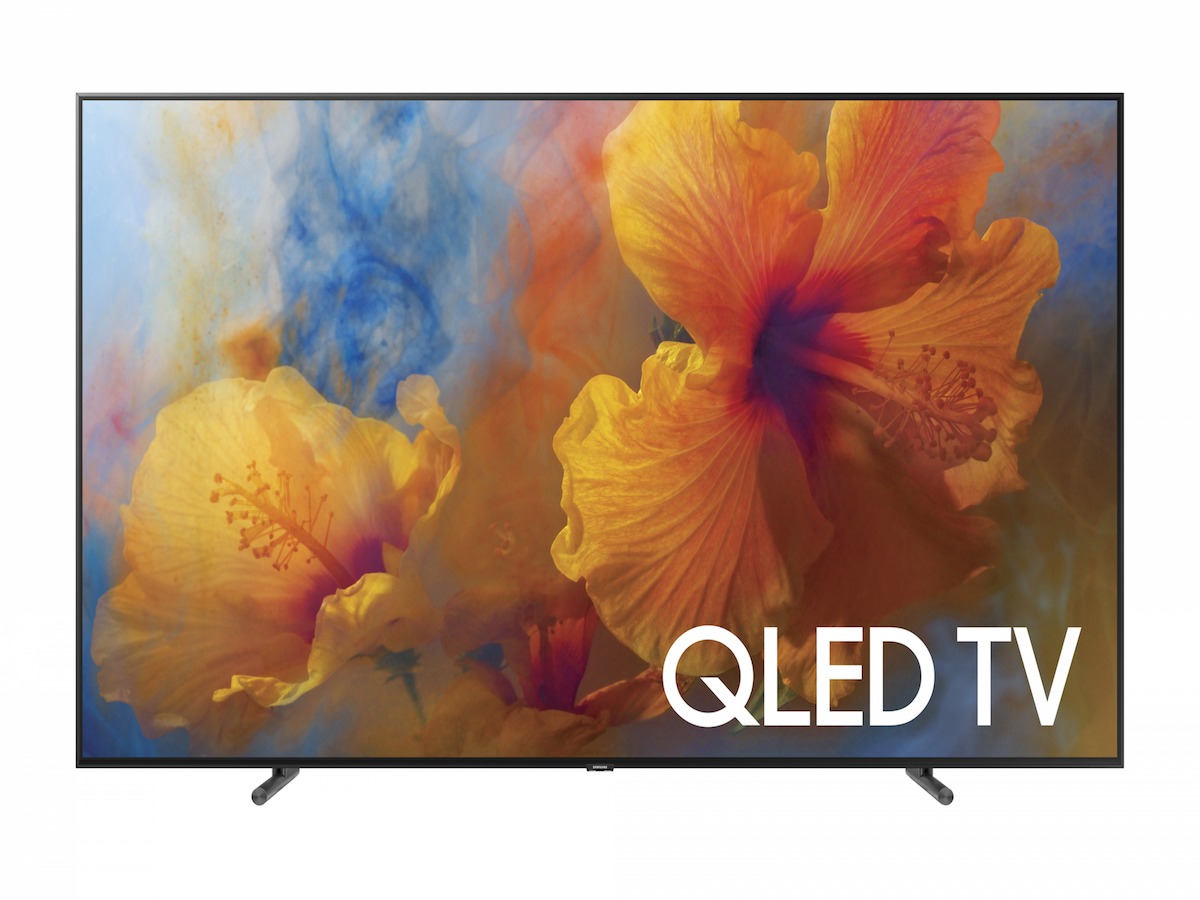
For the first time in a while, Samsung has bestowed a flat screen upon us for its flagship set. That’ll be a big plus for those AV fans not bowled over by the viewing angle concerns of curvy TVs.
This is the brightest of all the QLED panels, offering HDR2000 for up to 2000 nits of brightness. Consider that the Ultra HD Alliance (which sets the recommended standard for 4K TVs) suggests a minimum of 1000 nits, this set should really put some punch behind those whites.
Such brightness should really come into play with HDR content too, of which this set – and all the QLED range – supports the standard HDR10 and suspected broadcast favourite Hybrid Log Gamma (HLG).
It won’t support Dolby Vision like LG and Sony though, with Samsung instead working on its own, and yet another, HDR format (seriously guys, stop it) called HDR10 Plus. Amazon Video is signed up to be the first provider to support it, so it’s already got some clout.
Away from brightness, the Q9F is the most talented of the range in the dimming department too. It has 32 dimming blocks, which promise more accurate edge-lit local dimming than lower down the range.
Sound is covered by a 60W speaker and the smart TV system is dealt with by Samsung’s own improved Tizen set up, as it is across the whole range.
Screen sizes and prices: 88in (£17,800), 65in (£4900)
Samsung Q8C
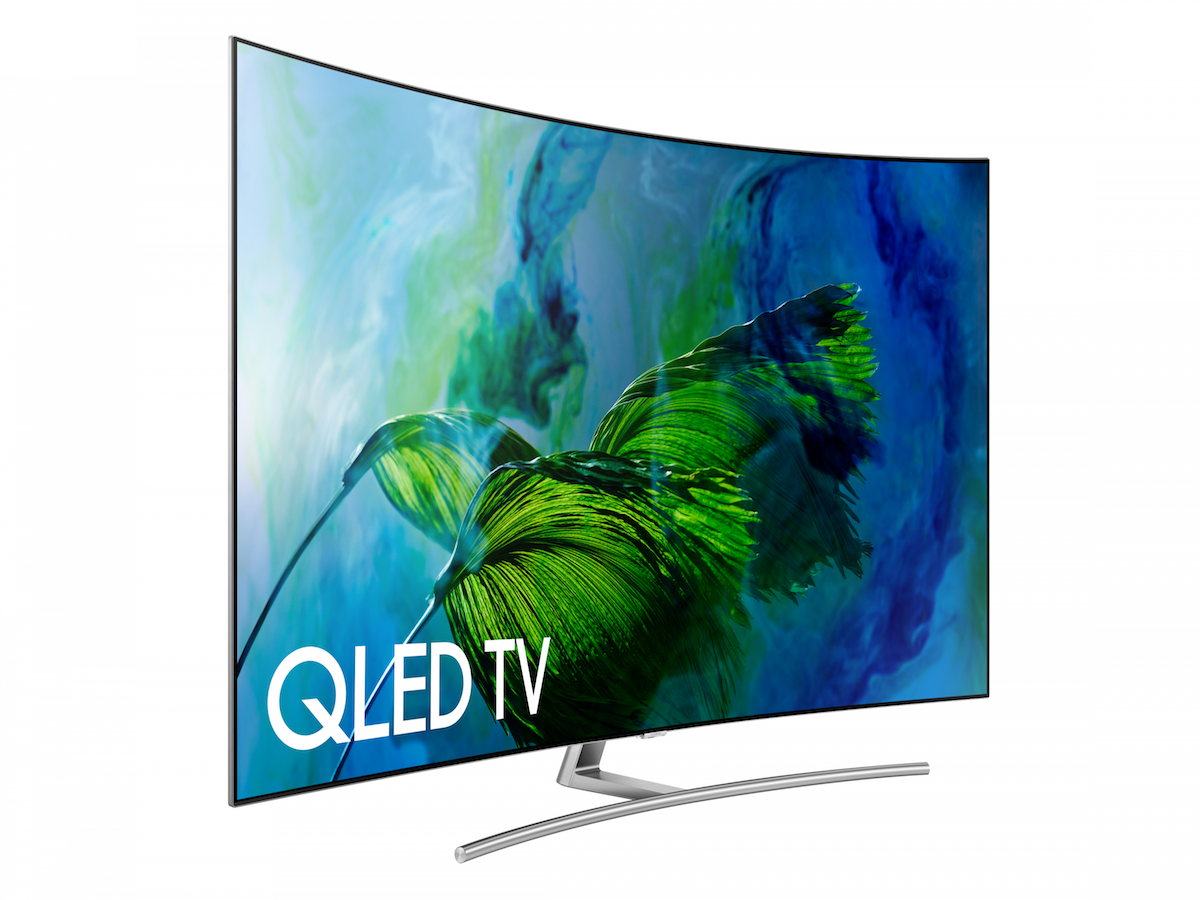
If you’re one of those people that loves the look of a curved set, this is the best one you can buy from Samsung this year.
It drops down to a HDR1500 specification for up to 1500 nits of brightness, but that’s still blinking bright, we’ll tell you.
There are a fair fewer dimming blocks compared to the Q9F though, from 32 down to 12, meaning it won’t be quite as talented in the contrast department.
Like the Q9, it has four HDMIs and three USBs housed in Samsung’s standalone (but included) OneConnect box, and 60w of sound.
Screen sizes and prices: 75in (£5800), 65in (£3800), 55in (£3000)
Samsung Q7F/Q7C
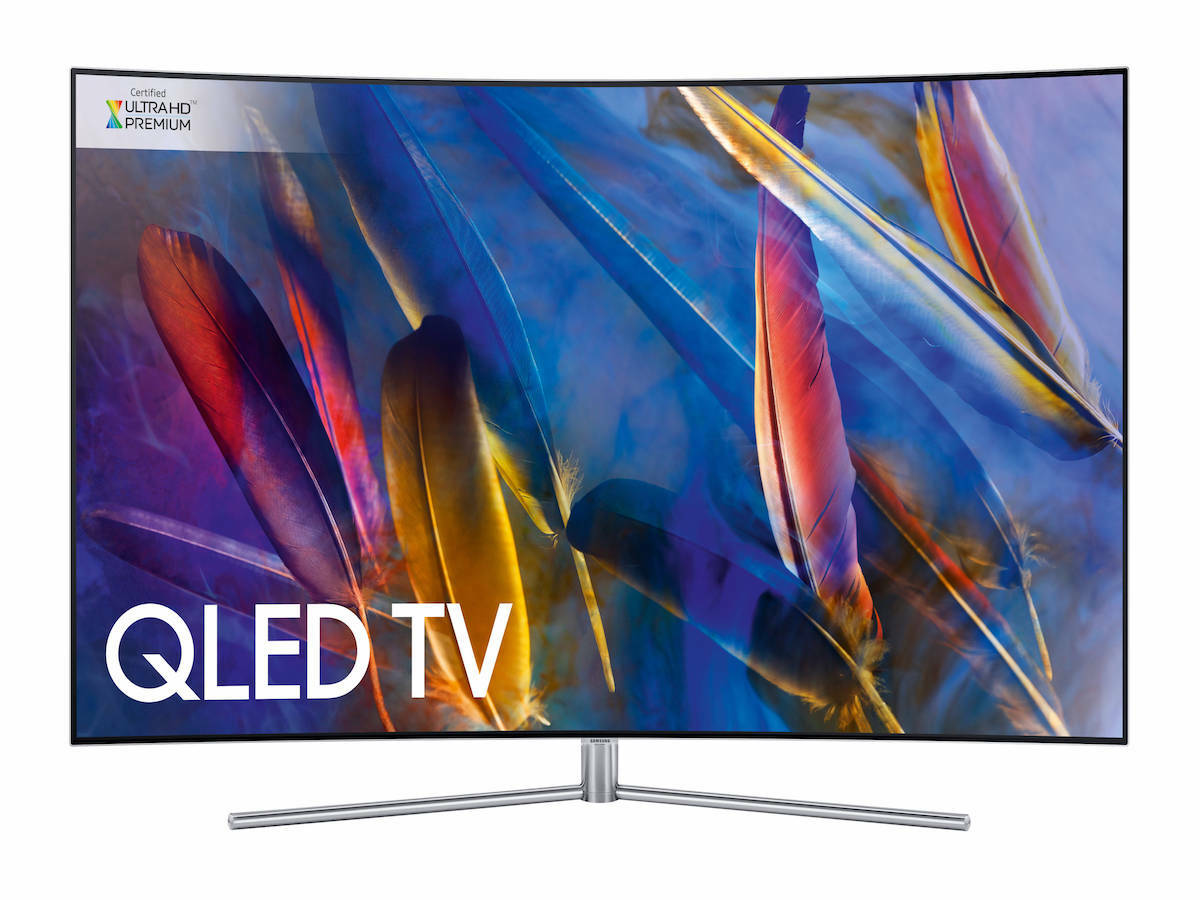
We’ve bundled these two sets together, because Samsung has kindly given its most affordable QLED TV both the flat and curved treatment to suit all tastes.
Other than their screens though, these two are pretty much identical. In fact, there’s not even a whole lot to separate them from the Q8C.
They both still feature HDR1500 for a really bright picture, and are still edge lit, with the same 12 dimming blocks for controlling light and contrast levels.
They feature the same Q Engine processor as the rest of the range too, which is tasked with making the improved smart TV system run smoothly, as well as the same built-in processing, like Samsung’s SDR-upscaling tech, HDR+.
Their design is a little less elegant than the two siblings above them though, with a slightly chunkier design at its thickest point.
Sound may be a touch worse too, offering 40w instead of 60w.
Screen sizes and prices: 75in (Q7F only, £5000), 65in (Q7C £3300, Q7F £3100), 55in (Q7C £2500, Q7F £2300), 49in (Q7C £2200, Q7F £2000)
Read the review: › Samsung QE49Q7F review
MU series
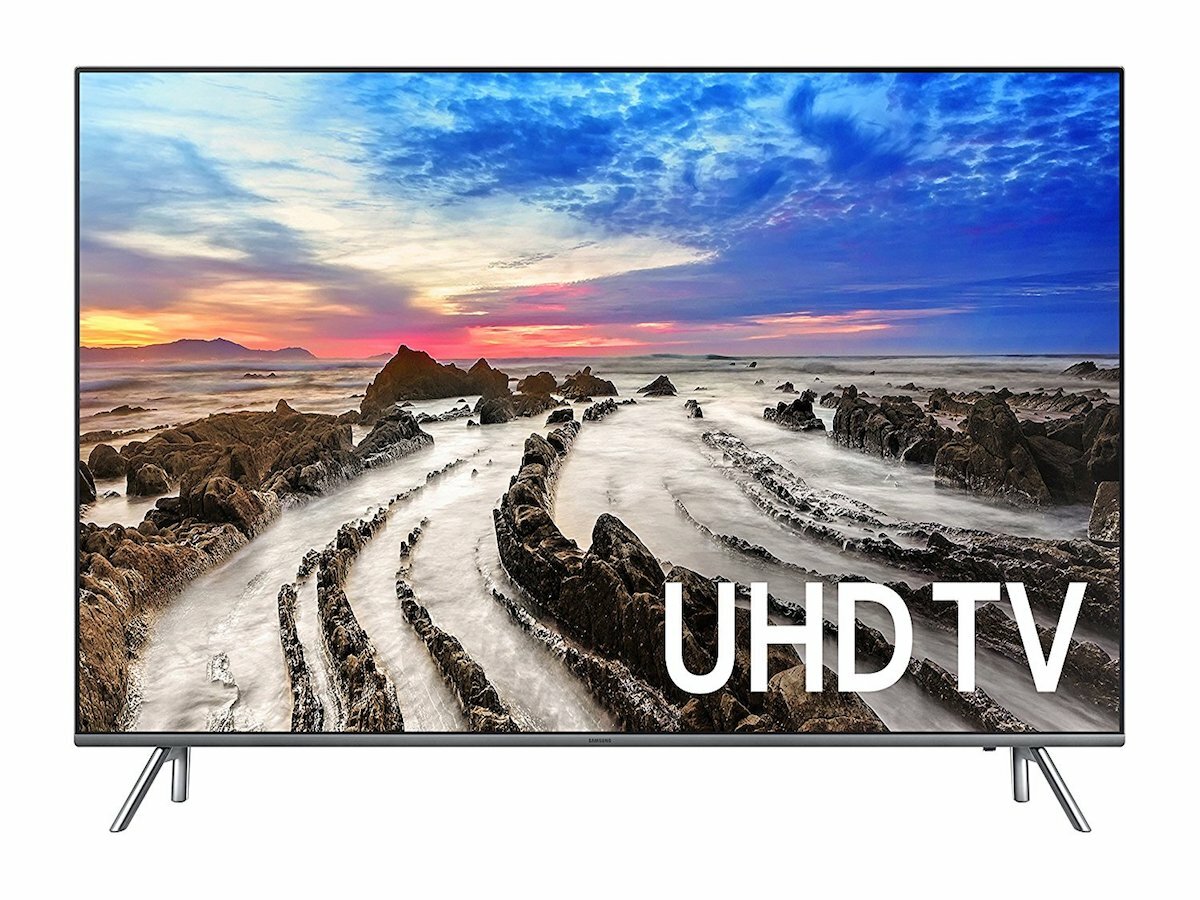
QLED is Samsung’s main flagship range for 2017, then, but it has quietly rolled out a number of other sets worthy of mention too.
The MU range is the direct successor to last year’s KS series, and means Samsung’s 4K HDR offering is now bigger than ever before.
It includes screen sizes from 40in all the way up to 82in, both in curved and flat varieties, and most importantly, with more affordable price tags than the high-end QLED sets.
It drops a few ‘nice-to-haves’, like the No Gap wall mount and Invisible Connection cable, and takes a step down in panel, brightness and processing the further you go down the range. The three sets below still have enough to be approved by the Ultra HD Alliance though, thanks to their 10-bit panels and HDR1000 capabilities, and are well worth a look in.
MU9000 (curved) – 65in (£2600), 55in (£2000), 49in (£1700)
MU8000 (flat) – 75in (£4000), 65in (£2300), 55in (£1700), 49in (£1500)
MU7000 (flat – pictured) – 75in (£3900), 65in (£2100), 55in (£1500), 49in (£1300)
